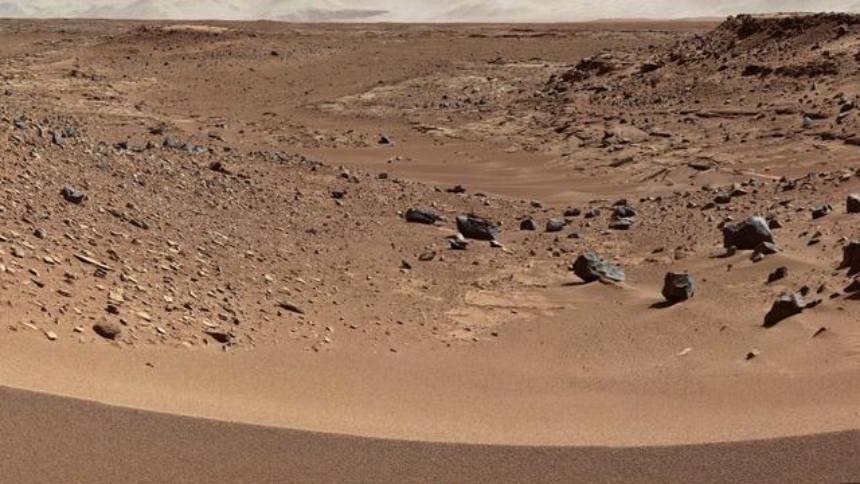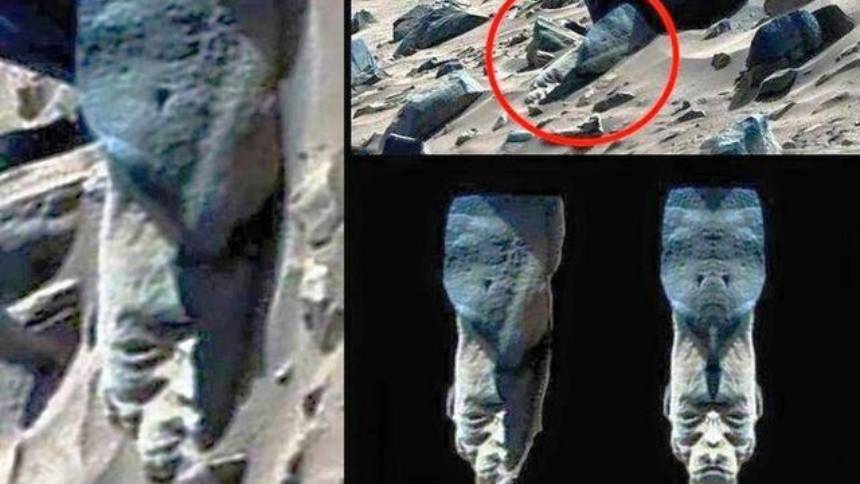The image was captured by the Curiosity rover with a mast camera with different lenses, from the easternmost sand dunes in the valley to the west of the valley. The Curiosity team chose this valley as a long-term scientific research route. A site called “Wild Dog Pass” is about a meter high in the middle and gradually narrows to the north and south ends on a low slope. The center of the image is about 10 degrees south and straight west, and the left edge is about 20 degrees west. Straight to the south, northwest to the right, the largest shadowy rock on the beach on the right half of the image, about 60 cm. This image is color balanced to show what it would look like on Earth, one version consists of two 2-meter bars in Shot 11 meters from the target and 40 meters from the rover.
Another version was shot in Martian light in original colors. From the frame of the panoramic image PIA17931, we can see that in the lower right corner there is something similar to a statue. According to Mars lovers, this statue has eyes, a nose and a mouth, and it is definitely not formed naturally on Mars. Are there any remains of buildings and other structures left by ancient Martian inhabitants deep within the Martian soil? In the past, some people disagreed with the theory of the ancient civilization of Mars and said it was just an utopian optical illusion that made us see things that did not exist, but most people believed that Mars did have life in the distant past, and now NASA Mars rover Evidence found.

Scientist Dr. Brandenburg believes that this may be the remains of an ancient civilization on Mars. This red planet was once the habitat of two alien civilizations in the past, but was wiped out by a third alien using nuclear weapons. Dr. Brandenburg pointed out that ancient Martians such as Cydonians and Utopians were all wiped out by nuclear weapons, and while evidence of genocide can still be seen today, Mars was completely different in ancient times than it is now. In this regard, experts also said that there are not only ancient civilizations on the earth in the solar system! In their opinion, this Martian statue looks no different from the ancient statues of the earth thousands of years ago, so this thing is enough to prove that Mars must have had a splendid ancient civilization in ancient times.
